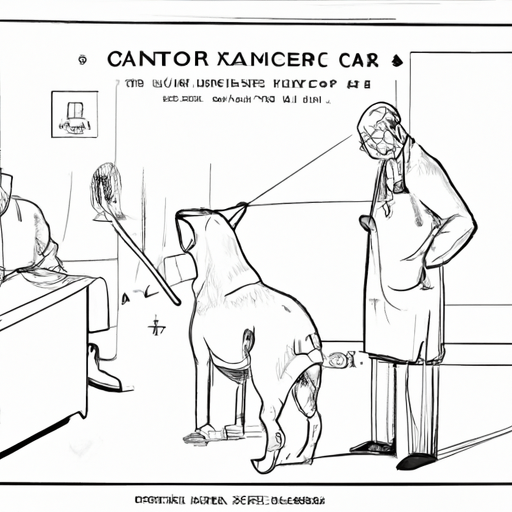“`markdown
What Does Cancer in Dogs Look Like?
1. Recognizing the Signs
Cancer in dogs can manifest in various ways. As a caring pet owner, you should be vigilant, closely observing the behavior of your beloved pet. The symptoms can be subtle and easy to dismiss as age-related changes or minor ailments. Don’t be fooled, though.
Some signs you may notice include:
- Unexplained weight loss
- Difficulty eating or swallowing
- Persistent sores or wounds that don’t heal
- Swelling or lumps on or under the skin
- Difficulty breathing, urinating, or defecating
If your pet exhibits any of these signs, it’s crucial to consult a veterinarian immediately.
2. Types of Canine Cancer
There’s a range of cancers that can afflict dogs. Each type has its unique set of symptoms and its unique diagnostic and treatment procedures. Some of the most common types include:
- Lymphoma: This cancer affects the lymph nodes and may cause swelling in the neck, armpits, or groin area.
- Mast Cell Tumors: These are often found on the skin and may appear as small sores or lumps.
- Melanoma: This skin cancer manifests as dark, irregularly shaped spots or lumps.
| Type of Cancer | Common Symptoms |
|---|---|
| Lymphoma | Swelling in neck, armpits, or groin |
| Mast Cell Tumors | Small sores or lumps on the skin |
| Melanoma | Dark, irregularly shaped spots or lumps |
3. Risk Factors and Prevention
Even though there’s no guaranteed way to prevent cancer, you can take steps to minimize risk factors. Regular check-ups, a balanced diet, and a healthy lifestyle can significantly lower the chances of your dog developing cancer.
4. Diagnostic Procedures and Treatment Options
Early detection is key in treating canine cancer. Regular vet check-ups and keen observation of any changes in your dog’s behavior or physical condition are crucial. If cancer is suspected, your vet will conduct a series of tests, like blood work, X-rays, ultrasounds, or biopsies.
Treatment options vary depending on the type and stage of cancer, but may include:
- Surgery
- Chemotherapy
- Radiation therapy
- Immunotherapy
5. Living with a Dog Diagnosed with Cancer
Receiving a cancer diagnosis for your pet can be overwhelming. But remember, with the right care and treatment, many dogs can live a comfortable and happy life. Focus on providing quality of life for your pet and cherish the time you have together.
FAQs
Q: Can a dog live a normal life with cancer?
A: Yes, many dogs live a fulfilling life with proper care and treatment.
Q: What is the most common cancer in dogs?
A: Skin cancer is the most common type in dogs.
Q: How can I help my dog prevent cancer?
A: Regular check-ups, a balanced diet, and a healthy lifestyle can help.
Q: Is cancer in dogs curable?
A: It depends on the type and stage of cancer, but many are treatable.
Q: What are the early signs of cancer in dogs?
A: Unexplained weight loss, difficulty eating, and persistent sores are some signs.
Remember, your vet is your best resource for information about your pet’s health. If you have concerns, don’t hesitate to reach out to them.
“`



